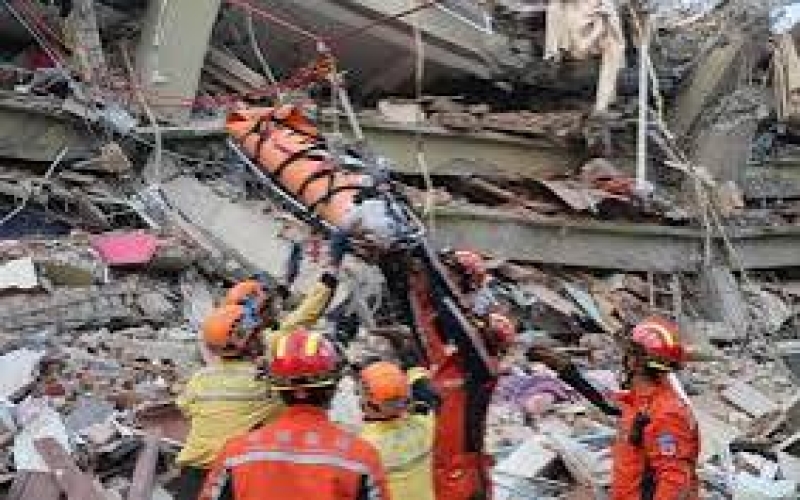- CA Yunus pays homage to Liberation War martyrs on Victory Day |
- Bangladesh capital market extends losing streak for second day |
- Bangladesh celebrates Victory Day Tuesday |
- 'Different govts presented history based on their own ideologies': JU VC |
Death Toll Surges to Over 2,700 in Myanmar Earthquake

The death toll from Friday’s catastrophic earthquake in Myanmar has risen to 2,719, with 4,521 individuals reported injured and 441 still missing, according to a statement made by State Administration Council Chairman Min Aung Hlaing. The remarks were made during a cash donation ceremony held in Nay Pyi Taw on Tuesday, where local officials gathered to provide support to the victims of the devastating disaster.
The earthquake, which struck the central region of Myanmar on Friday, has left widespread destruction in its wake, with entire neighborhoods leveled and critical infrastructure damaged. The disaster has affected thousands of families, with many still trapped under the rubble. Rescue teams and relief workers have been working tirelessly to locate survivors, but the aftershocks and difficult terrain have complicated efforts.
Min Aung Hlaing, speaking during the ceremony, urged national and international organizations to extend aid to the affected regions. “This tragedy has taken a heavy toll on our nation, but the government and people of Myanmar are determined to recover and rebuild,” he said.
The earthquake’s impact has been felt across multiple states, with areas in the Sagaing and Mandalay regions among the hardest hit. In addition to the human toll, the destruction has severely impacted the economy, with businesses, homes, and roads reduced to rubble.
The government has dispatched additional emergency teams to the affected areas and is coordinating efforts with local and international relief organizations. According to reports, medical teams have been deployed to treat the wounded, and temporary shelters have been set up for the displaced.
Myanmar’s military, along with other state agencies, is also working to clear debris and restore vital services like water, electricity, and communications. However, with thousands of people still missing, the situation remains dire, and authorities fear that the death toll may continue to rise as rescue operations continue.
International governments and humanitarian organizations have expressed their condolences and offered assistance to Myanmar. Countries in the region, as well as global aid groups, are providing emergency supplies such as food, medicine, and blankets to support the displaced populations.
As Myanmar continues to grapple with the aftermath of this disaster, the nation’s resilience and the outpouring of support from both within and outside the country offer hope that recovery efforts will gain momentum in the coming weeks. However, with so many still unaccounted for and critical infrastructure damaged, the road to recovery will be long and challenging.

